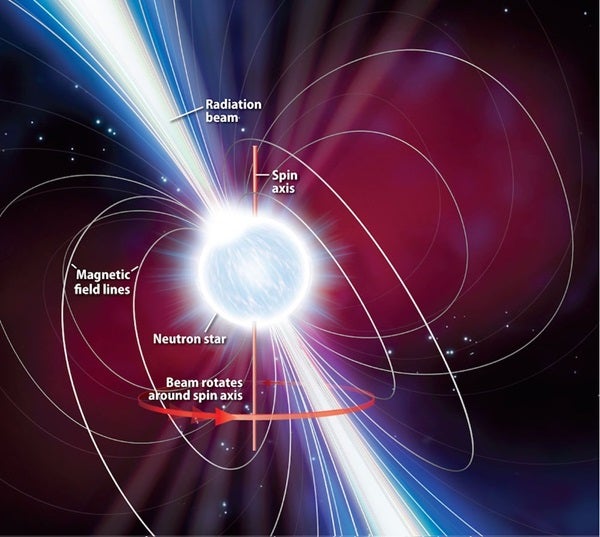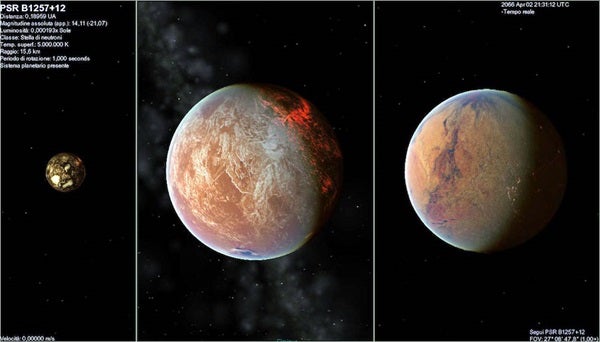These bursts of deadly radiation (plus surges of other damaging particles) make the idea of living around a pulsar seem laughable. However, for the first time, astronomers have determined what it would take for a habitable exoplanet to survive the harsh conditions of a pulsar system. And as it turns out, it only takes an atmosphere — albeit a very (very) thick one.
In a study published December 20 in the journal Astronomy & Astrophysics, researchers calculated that the habitable zone — the region around a star where liquid water can exist — for an exoplanet around a pulsar could be as large as the orbit of Earth around the Sun. However, the researchers stressed that this requires the pulsar’s planet be a super-Earth, capable of sustaining an atmosphere up to a million times as thick as our own.
The first confirmed detection of any exoplanet came way back in 1992 with the discovery of multiple terrestrial-mass planets orbiting the pulsar PSR B1257+12, located 2,300 light-years away in the constellation Virgo. Three rocky exoplanets are now known to orbit this pulsar, and two of them are super-Earths (each weighing roughly four times the mass of Earth). But could any of these exoplanets really be habitable?
Using archival X-ray observations taken with the Chandra X-ray Observatory, astronomers Alessandro Patruno (Leiden University and ASTRON) and Mihkel Kama (Leiden University and Cambridge University) investigated the pulsar to determine how much energy it was releasing in X-ray light. Based on the Chandra data, the researchers calculated that the two super-Earth planets around the pulsar were receiving enough energy from X-rays to sustain liquid water. That is, as long as they have absurdly dense atmospheres.
According to the study, if a planet around PSR B1257+12 has a thick enough atmosphere, it can absorb and convert the pulsar’s deadly X-rays and high-energy particles into relatively harmless infrared radiation — otherwise known as heat. However, the atmosphere would need to be so thick that the conditions on the exoplanet’s surface would be similar to those found at the bottom of the Mariana Trench, the deepest part of Earth’s oceans.
“According to our calculations, the temperature of the planets might be suitable for the presence of liquid water on their surface,” co-author Alessandro Patruno said in a press release. “Though, we don’t know yet if the two super-Earths have the right, extremely dense atmosphere.”












